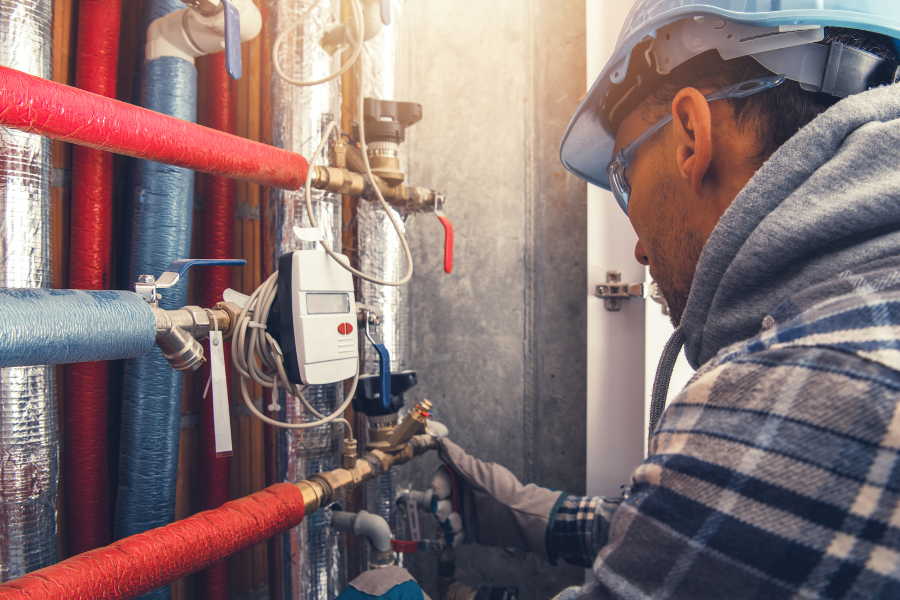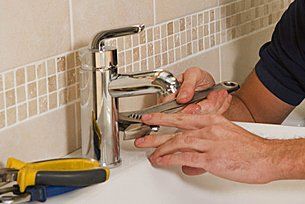Each person will have their own conception in relation to Innovative Plumbing Trends Transforming Construction.

Introduction
The plumbing sector is undertaking a transformative phase driven by technical improvements and expanding worries for sustainability and effectiveness. This post explores emerging trends and innovations shaping the future of plumbing.
Regulative Landscape
Governing frameworks play an important duty in shaping the adoption of plumbing technologies, with standards and codes governing every little thing from water performance to item safety. As innovations continue to evolve, regulative bodies need to adapt to make certain customer protection and environmental stewardship.
Future Outlook
The future of pipes is characterized by proceeded development and assimilation with other fields such as IoT, renewable resource, and building automation. By accepting sustainable practices, leveraging emerging innovations, and prioritizing user-centric layout, the plumbing industry is poised to address the advancing needs of society while reducing its ecological footprint.
Increased Reality in Plumbing
Enhanced Truth (AR) technology is revolutionizing pipes by giving service technicians with real-time visual guidance for troubleshooting and repair work tasks. AR-enabled smart glasses or mobile applications overlay electronic information onto the physical environment, aiding plumbers visualize pipeline designs, determine hidden leakages, and perform repair services with precision.
Influence of 3D Printing
The arrival of 3D printing has actually presented brand-new possibilities in making pipes parts. From custom-designed fixtures to detailed pipeline installations, 3D printing permits quick prototyping and on-demand production, decreasing lead times and allowing higher personalization in plumbing design.
Health and Safety Features
In response to enhanced problems for health and wellness, plumbing components are integrating features such as antimicrobial surface areas, touchless operation, and self-cleaning devices. These advancements not just enhance hygiene yet additionally promote customer convenience and benefit.
Hygiene-focused Components
Touchless faucets, self-sanitizing bathrooms, and antimicrobial surface areas are becoming increasingly common in residential and commercial settings, lessening the danger of germ transmission and promoting a cleaner, much healthier setting.
Water Top Quality Tracking
Innovations in water top quality surveillance innovations allow house owners to keep track of the purity and safety and security of their water system in real-time. Smart water high quality sensing units can find pollutants, pH degrees, and temperature level variations, equipping users to take positive measures to make certain water safety and security.
Remote Plumbing Services
Remote diagnostics and online aid are revolutionizing the method plumbing solutions are supplied. Through video conferencing and remote accessibility technologies, plumbings can fix problems, supply advice for do it yourself fixings, and even perform remote evaluations, using higher availability and comfort to house owners.
Difficulties and Opportunities
While plumbing technologies hold enormous guarantee, they additionally existing challenges such as information privacy worries, regulatory compliance, and the demand for workforce training. Attending to these obstacles needs cooperation in between sector stakeholders and regulatory bodies to make sure safe and liable implementation of brand-new modern technologies.
Smart Pipes Systems
Incorporating wise innovation into pipes systems makes it possible for remote surveillance, leakage detection, and automated upkeep. Smart sensors and IoT (Internet of Points) devices permit homeowners and plumbing technicians to keep an eye on water usage and spot issues in real-time, bring about a lot more efficient resource monitoring and proactive maintenance.
Water Performance Solutions
With increasing emphasis on water conservation, ingenious services are being created to decrease water wastefulness in pipes systems. High-efficiency components, greywater recycling systems, and smart watering controllers are among the technologies assisting consumers minimize their water footprint while maintaining convenience and ease.
Lasting Materials
The change in the direction of sustainability reaches plumbing products, with a growing choice for eco-friendly options. Naturally degradable piping materials, such as PEX (cross-linked polyethylene) and HDPE (high-density polyethylene), offer toughness and resistance to deterioration without compromising ecological integrity.
Predictive Maintenance
Anticipating upkeep techniques take advantage of information analytics and machine learning formulas to expect and protect against pipes concerns prior to they take place. By examining historical data and performance metrics, predictive maintenance formulas can recognize patterns and abnormalities, allowing positive interventions to stay clear of pricey repair work and disruptions.
Verdict
Finally, the future of pipes is specified by a merging of innovation, sustainability, and user-centric design. By welcoming wise services, sustainable products, and positive upkeep practices, the plumbing sector can enhance performance, advertise safety, and add to an extra lasting future.
Plumbing Technology Trends 2024: Shaping a Sustainable and Efficient Future
Plumbing Technology: A Beacon of Innovation
Intelligent Plumbing Systems: The adoption of smart plumbing solutions offers unparalleled control over water usage, preventing waste and ensuring optimal efficiency. These systems can be installed by qualified contractors and may require technicians with expertise in new codes for proper functionality. Eco-Friendly Piping: Innovations in piping materials, like PEX and recycled content options, are making plumbing systems more sustainable. These materials are not only better for the environment but also durable and flexible, making them easier to install and less likely to need repairs. Automated Leak Detection: New plumbing technologies include systems that can automatically detect leaks. This is a big deal because it means we can fix them before they cause a lot of damage or waste too much water. It’s all about catching problems early and saving resources. Energy-Efficient Water Heaters: There’s also a big push towards devices that use less energy. This includes solar and tankless models, which provide hot water only when it’s needed, cutting down on energy use and costs. Plumbers: Champions of Sustainability
Adopting Green Practices: Contractors who specialize in sustainable plumbing can ensure your system meets the latest regulations and utilizes efficient valves. They undergo comprehensive training programs that emphasize sustainability in practices like eco-friendly installations. Water Conservation Efforts: Through the installation of high-efficiency appliances, plumbers are essential in reducing water consumption and promoting conservation. When repairing or replacing older fixtures, plumbers can recommend high-efficiency options that comply with local codes. Pipe: The Lifeline of Modern Plumbing
Innovative Pipe Solutions: The use of environmentally friendly and durable materials in pipes, like PEX and recycled content options, reduces the ecological footprint and enhances water quality. These innovative pipe solutions may require specialized repair techniques from qualified plumbers familiar with the materials. Advanced Leak Detection: Modern pipes are now more frequently equipped with sensor technology that can identify leaks early, conserving water and preventing damage. Early leak detection can save homeowners money on repair costs and potential water damage. Water Heater: At the Forefront of Efficiency
Renewable Energy Heaters: Solar heaters and other renewable energy-powered models are becoming more common, offering an eco-friendly alternative to traditional methods. These benefit the environment but can also potentially lead to lower water bills through reduced energy use. On-Demand Heating: Tankless heaters have gained popularity for their ability to provide hot water as needed, minimizing energy waste. This innovative technology eliminates the need for a large storage tank, freeing up valuable space and simplifying the installation process for qualified plumbers. https://intownplumbingtx.com/articles/plumbing-technology-trends/

We were made aware of that report about 7 Plumbing Industry Trends You Need To Know through an acquaintance on our other web property. Sharing is good. Helping people is fun. We recognize the value of your readership.
Call Today